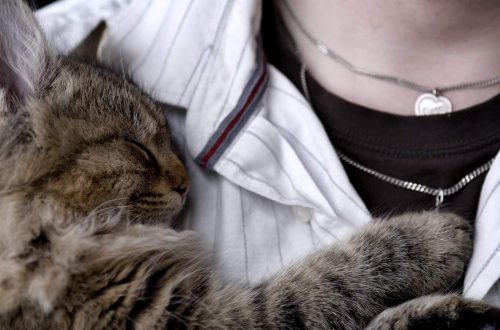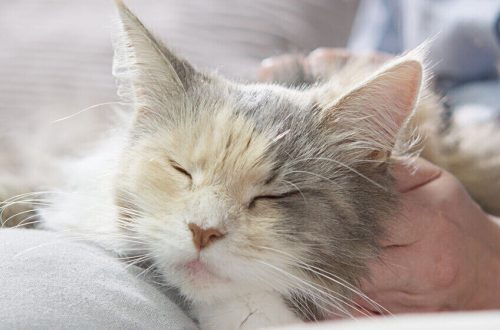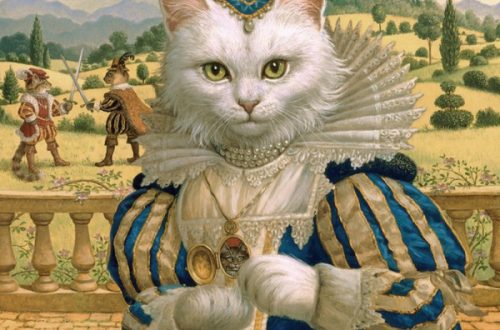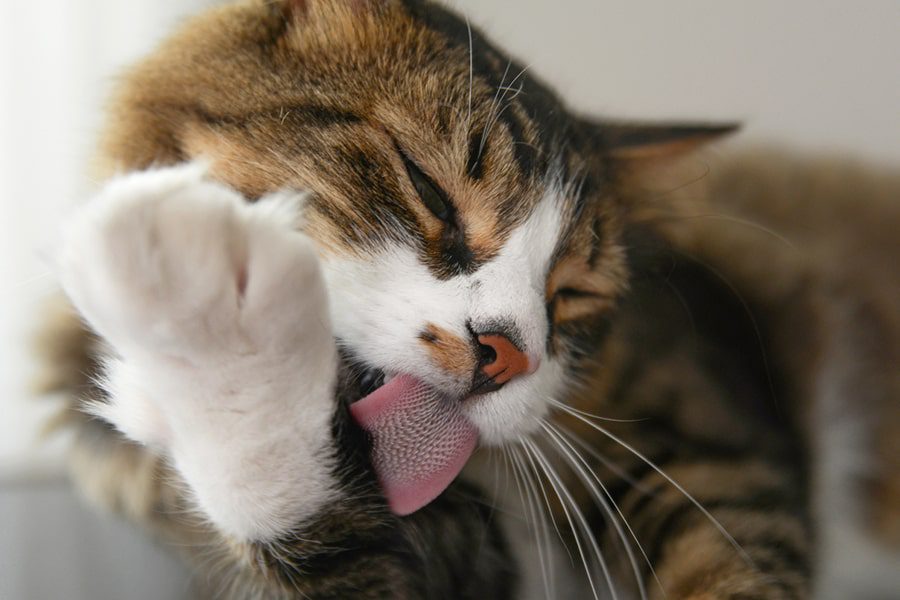
cat licking
Licking for a cat is not only a means of maintaining cleanliness, but also a means of thermoregulation, communication, and exchange of smells. 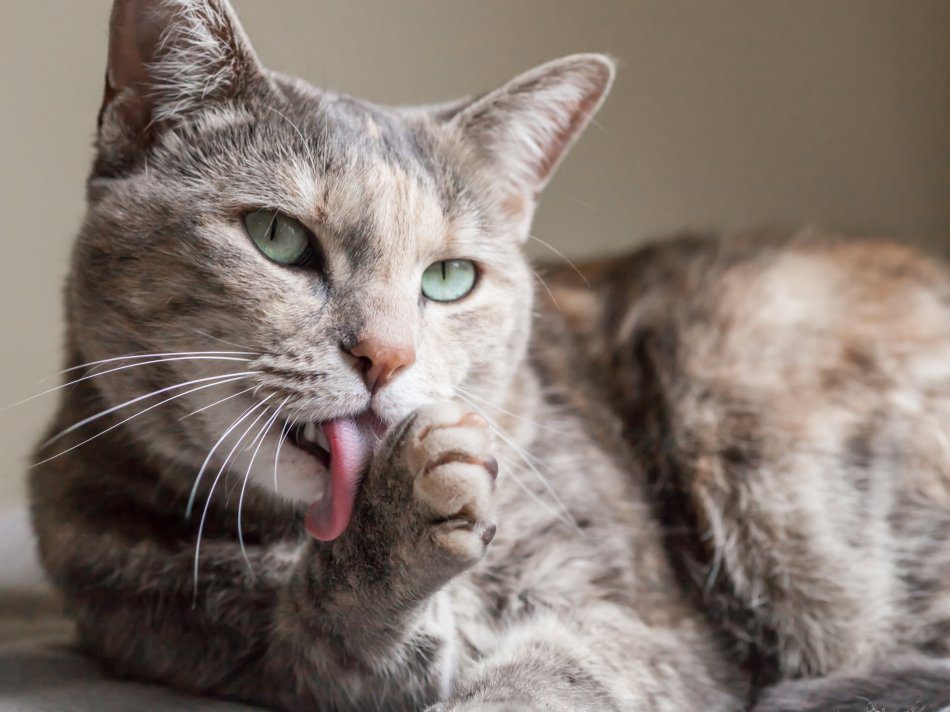 In the photo: licking a cat
In the photo: licking a cat
Contents
Why do cats lick themselves?
All cat lovers know that they have a very rough, rough tongue. But this is a necessary tool for self-care: there are small hooks on the cat’s tongue that help remove dirt and dust from dead hair. Also, by licking, cats even out the coat, thereby improving thermoregulation. And they distribute a special lubricant (sebum) over the coat, it gives the coat water-repellent properties. In addition, when licking, the cat restores its natural smell. By the way, when a cat licks you, she transfers her scent to you. Licking helps the cat cope with stress. On the fur of cats there is a substance containing vitamin B, which is involved in the regulation of the psycho-emotional state. At different times of the year, cats take care of themselves in different ways. In summer, they smooth their fur to protect them from the heat; in winter, on the contrary, they fluff their fur to keep warm. Cats spend about 30% of their time grooming themselves. But it happens that cats pay more attention to this than required, which leads to the formation of abrasions, rashes, wounds, bald patches. This is a bell that something is going wrong in the cat’s body. Symptoms of excessive licking can be frequent regurgitation of hairballs, the appearance of bald patches, and the presence of scratches.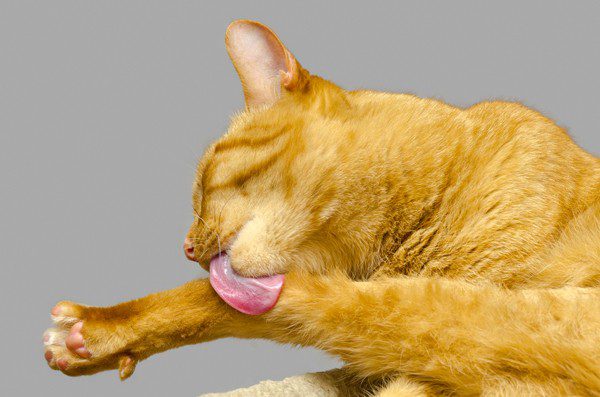 In the photo: licking a cat
In the photo: licking a cat
Causes of pathological cat licking
There can be many reasons. The main ones are:
- Parasites (fleas, scabies, helminths).
- Allergy.
- Stress (limitation of space, moving).
- Constipation (anus licking).
- Fungal diseases.
- bacterial infections.
- Skin pathologies.
- Neuroses (cats actively lick their faces, twitch their tails, dilated pupils).
- Estrus (actively licks under the tail, behaves noisily, puts aside the butt).
- Violation of the integrity of the skin.
- Foreign smell (after contact with unpleasant objects or a person, the cat actively cleans the coat).
- Overgrooming (active obsessive licking of the tail and croup).
- Violation of vitamin and mineral balance.
Prevention of pathological cat licking
Protecting cats from stress, timely prevention of parasites, proper feeding, maintaining the microclimate in the room will help prevent pathological licking in cats.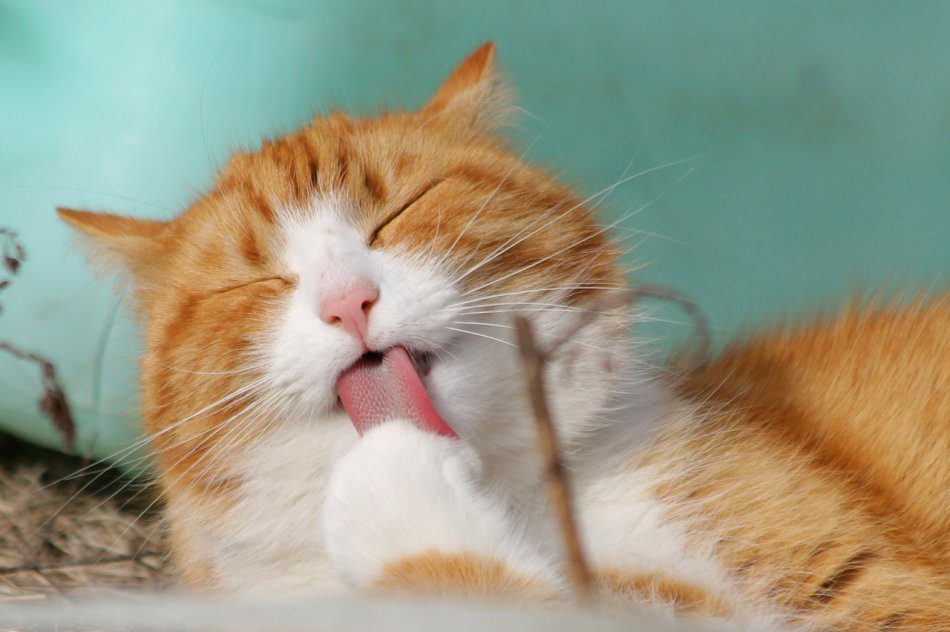 In the photo: licking a cat
In the photo: licking a cat
Treatment of pathological licking in cats
To begin with, it is necessary to exclude all external factors. After that, only a veterinary specialist will help you fully establish the diagnosis. Additional studies may be needed to make a diagnosis. And, finally, you will have to follow all the recommendations of the veterinarian.



